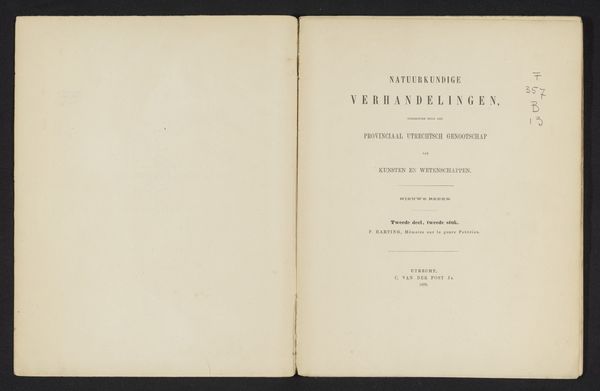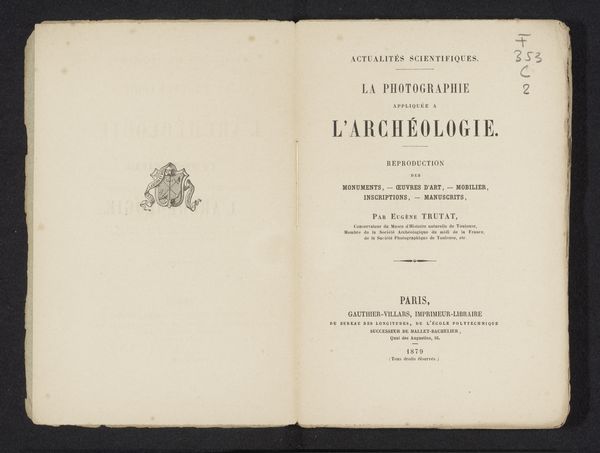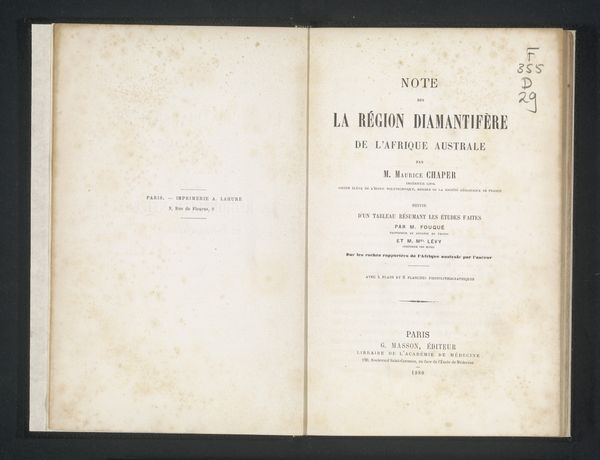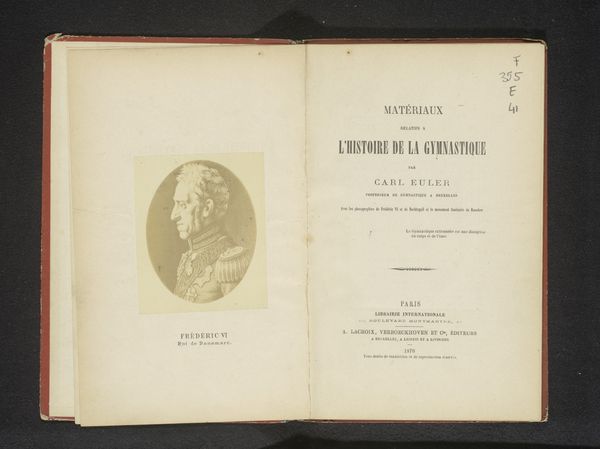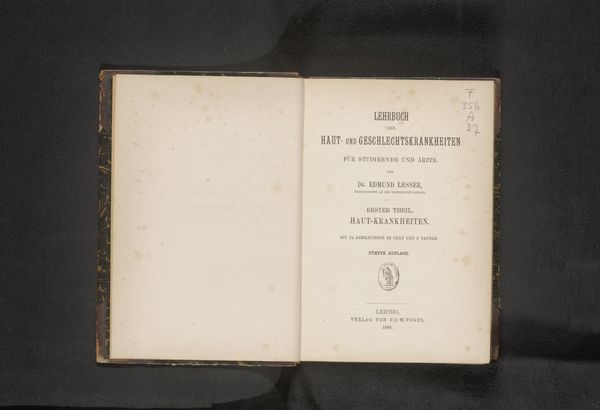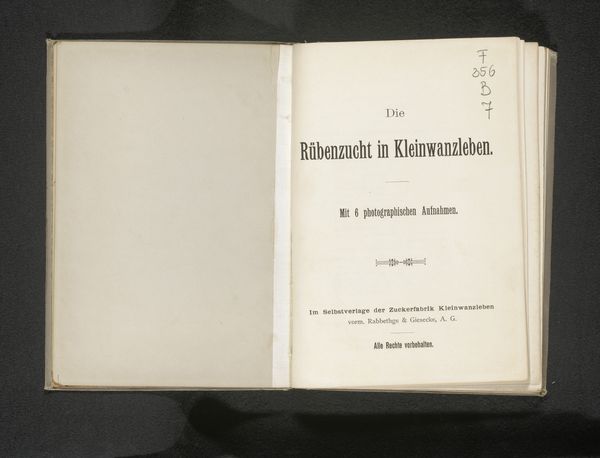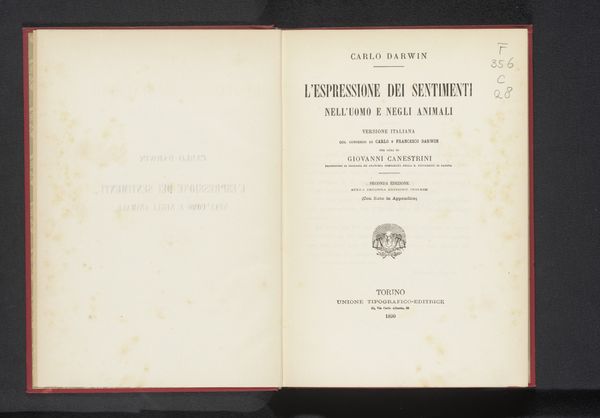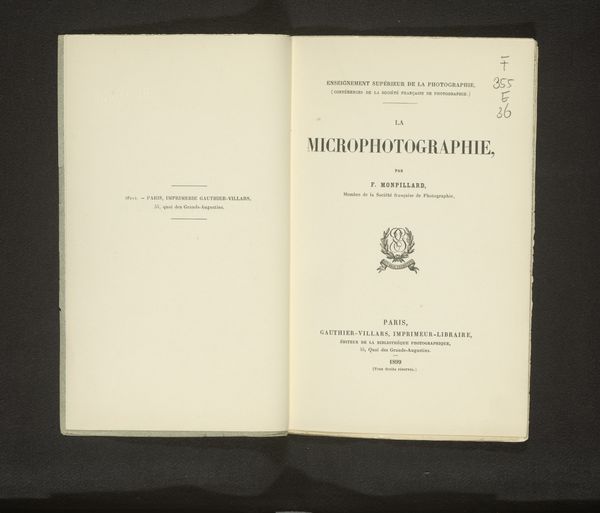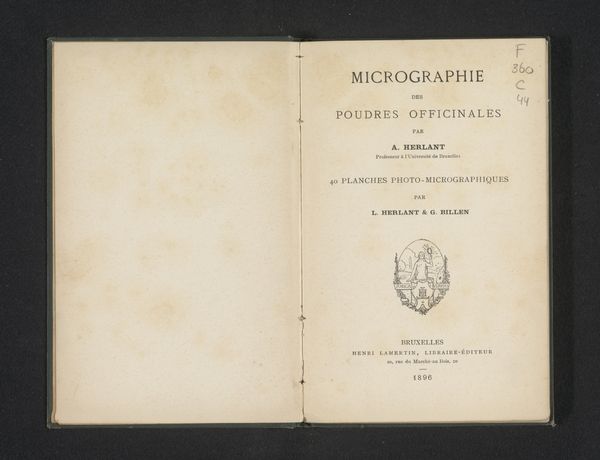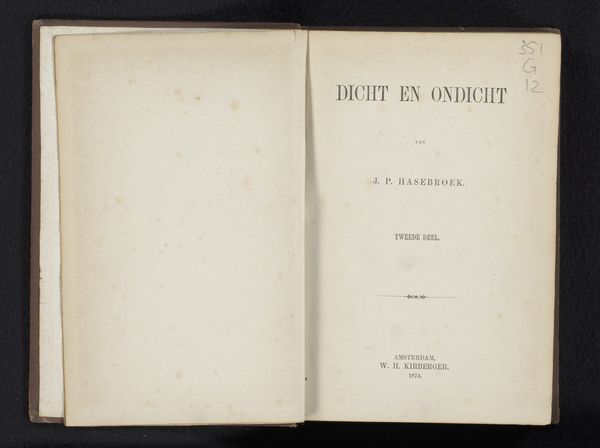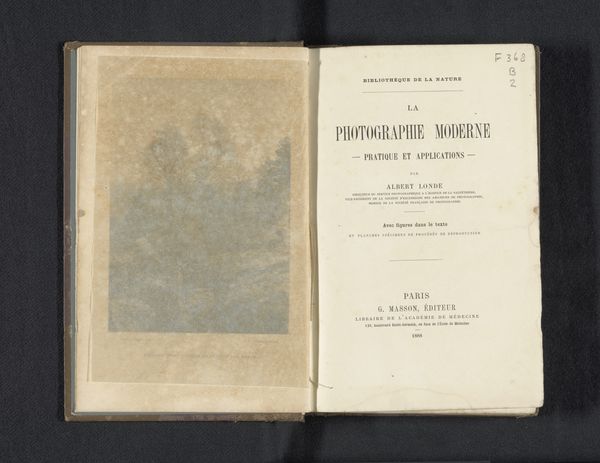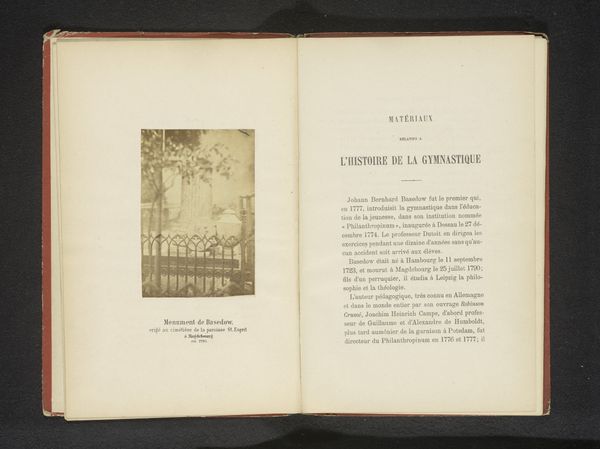
print, paper, typography
# print
#
book
#
paper
#
typography
#
neo-romanticism
Dimensions: height 237 mm, width 159 mm, thickness 8 mm
Copyright: Rijks Museum: Open Domain
Editor: Here we have Savva N. Soimescu’s “Biserica episcopiei argesului,” a printed book from 1886. The book’s opened, revealing the title page with some really elegant typography. It's fascinating how much importance was given to typography back then. What stands out to you in this piece? Curator: Well, immediately I’m drawn to think about the role of printed material, especially books, in shaping national identity and cultural narratives in the late 19th century. Romania was a relatively young nation at this point. Who was Soimescu, and why was he documenting this particular church? Editor: I believe Soimescu was a doctor in political and administrative sciences, who undertook to document this Church. What I find interesting is how this ties into Neo-Romanticism. Curator: Exactly. This connects to a broader European trend of romanticizing the past, often to solidify national pride and legitimacy. Churches, particularly historically significant ones like this Arges Episcopacy Church, often served as focal points for these narratives. This book could be seen as contributing to a construction of Romanian national heritage. What details in the book point to this? Editor: I suppose, the emphasis given to the origin story might point in that direction. Also, the mention of “all rights reserved”, hints at modern copyright practices, indicating an intent to control and disseminate a specific narrative. Curator: Precisely. So it’s not just a simple description of a church. It's actively participating in a dialogue about history, nationhood, and the role of cultural institutions. Understanding these prints and texts is pivotal for knowing the period and how art relates to cultural and political narratives. Editor: It’s amazing how a book about a church can reveal so much about a nation's identity.
Comments
No comments
Be the first to comment and join the conversation on the ultimate creative platform.
